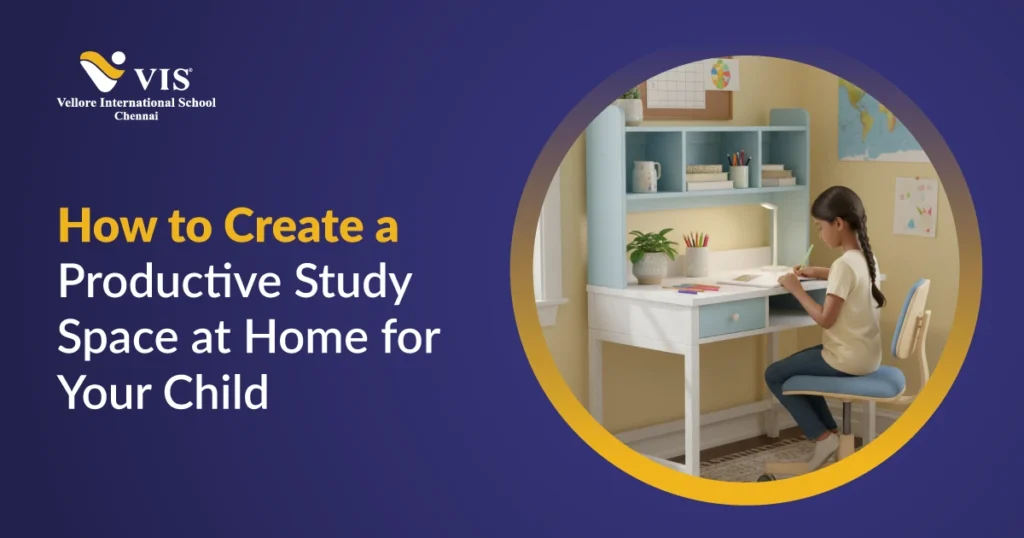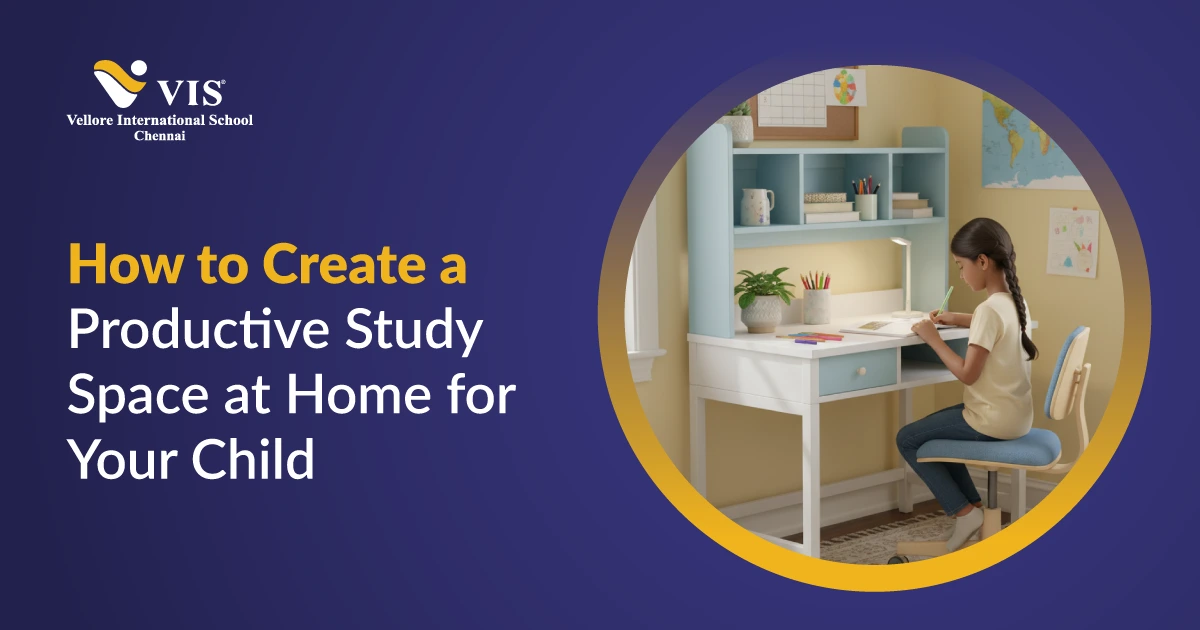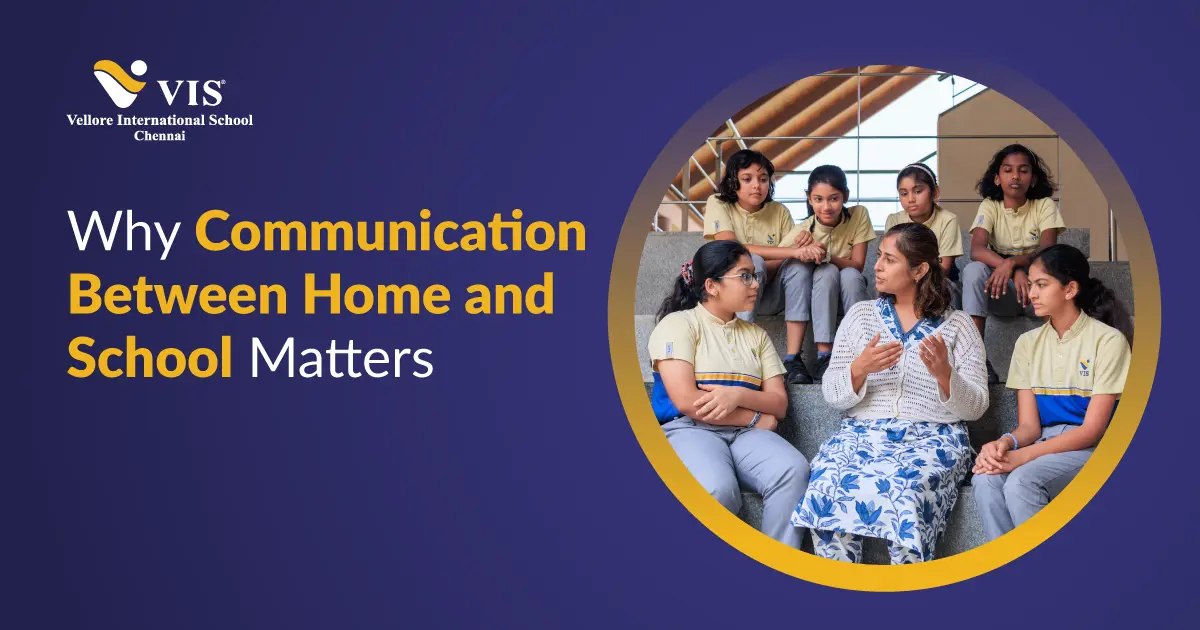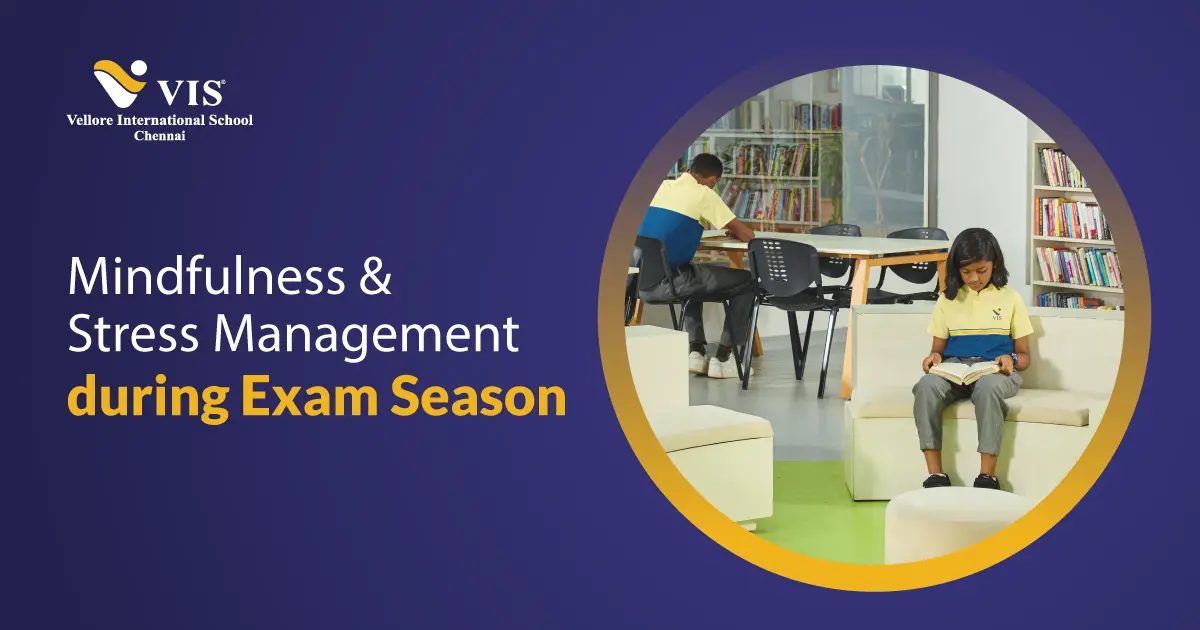Why does your child struggle to concentrate at home, even with the best intentions to study? The answer often lies in their learning environment. A well designed study space can make a world of difference, turning distractions into focus and chaos into calm.
Creating a productive study space at home is about setting the right atmosphere for consistent learning. With the right study space setup at home and smart home study area tips, parents can help children build strong study habits, boost motivation, and enjoy the learning process every day. Let’s explore how to make this happen.
Why a Dedicated Study Space Matters
Before we dive into design and organisation, let’s understand why a dedicated study space setup at home is so impactful:
- When children associate a specific space with studying, their brains learn to switch into “focus mode” more easily.
- A stable environment encourages daily learning habits.
- A personalised home study area helps children take ownership of their education.
- Clear boundaries between study and playtime reduce anxiety and improve time management.
In short, investing time in thoughtful, productive study space ideas is a gift that keeps on giving.
Creating a Productive Study Space at Home
1) Choosing the Perfect Location
The first step in setting up a productive study space at home is selecting the right location.
Ideal Qualities of a Study Spot:
- Quiet corner: Away from high-traffic areas like the living room or kitchen.
- Good natural light: Bright light enhances alertness and mood.
- Ventilation: A fresh, airy space keeps energy levels up.
- Proximity to supervision: For younger children, the area should be close enough for parental guidance without constant interference.
Even if you don’t have a spare room, a well organised nook can work beautifully. Many parents transform a balcony corner, part of a bedroom, or a hallway alcove using clever home study area tips.
2) Furniture That Supports Learning
A good study space is built on ergonomics. Your child’s desk and chair can make or break their comfort and posture. Smart Furniture Tips:
- Adjustable chair: Keeps feet flat and supports the spine.
- Right-sized desk: Ensure elbows rest comfortably at 90 degrees.
- Ample surface area: Enough for textbooks, notebooks, and a laptop/tablet.
- Storage: Drawers, bins, or shelves help maintain order.
Modern parents often use multifunctional furniture to maximise space. For example, foldable desks or wall-mounted shelves are brilliant, productive study space ideas for small apartments.
3) The Psychology of Colour and Lighting
Surprisingly, the colour scheme and lighting of a study space setup at home influence a child’s focus levels. Colour Psychology:
- Blue & green: Promote calmness and focus.
- Yellow: Sparks creativity but should be used in moderation.
- White: Keeps the space feeling open and clean.
Lighting Matters:
- Natural light is best for daytime study sessions.
- Warm white lamps mimic sunlight during evenings.
- Task lighting (desk lamps) reduces eye strain during reading or writing.
Using soft, balanced tones combined with bright, shadow-free lighting is one of the simplest yet most effective home study area tips.
4) Declutter to Encourage Focus
A cluttered space equals a cluttered mind. Research shows that messy environments reduce focus and increase procrastination. Decluttering Tips:
- Keep only essentials on the desk.
- Use storage bins or organisers for stationery and books.
- Label shelves for easy access.
- Do a quick daily 5 minute tidy-up ritual.
This simple habit transforms even modest productive study space ideas into powerful productivity boosters.
5) Personalisation: Make It Their Own
Children engage better in spaces they feel emotionally connected to. Encourage your child to personalise their study space setup at home thoughtfully:
- Let them choose a motivational poster or wall art.
- Add a corkboard for timetables, goals, and achievements.
- Use their favourite colours sparingly for accent pieces.
- Place a small plant for freshness and responsibility.
These home study area tips ensure the space reflects their personality while staying uncluttered and inspiring.
6) Tech Setup: Striking the Right Balance
Technology can be both a tool and a distraction. A good study space setup at home should include tech thoughtfully: Smart Tech Practices:
- Keep a charging station nearby to avoid mid-study interruptions.
- Use screen filters for glare protection.
- Install parental control apps for focused digital learning.
- Keep non-essential gadgets out of reach during study time.
Balanced use of technology is one of the most overlooked yet essential productive study space ideas.
7) Creating a Study Routine That Sticks
The most beautiful study corner won’t help if there’s no consistency. Pair your home study area tips with a structured routine:
- Set fixed study hours to build discipline.
- Use visual schedules for younger children.
- Break sessions into focused intervals with short breaks.
- End with reflection, a quick review of what was learned.
Over time, your child’s brain begins to associate their personalised space and specific time slots with concentration and productivity.
8) Encourage Break Zones & Balance
It’s important that children don’t associate studying with pressure alone. One of the smartest home study area tips is to include a small break corner nearby:
- A comfy chair for reading.
- A small mat for stretches or quick yoga.
- A soft light zone for relaxing between sessions.
These “pause points” refresh the mind and prevent burnout.
9) Integrating Digital Learning Tools
In today’s hybrid education environment, children need spaces that support both books and screens. Your study space setup at home should facilitate smooth transitions:
- Laptops/Tablets: Positioned at eye level to avoid strain.
- Noise cancelling headphones: For online classes or focus sessions.
- Whiteboards: For brainstorming or jotting down digital class notes.
These productive study space ideas ensure your child thrives in both physical and digital learning modes.
10) Age-Appropriate Adaptations
Every child’s learning needs evolve. Tailor your productive study space ideas accordingly:
- For younger kids: Bright colors, parental proximity, playful storage.
- For tweens: More independence, larger desks, motivational boards.
- For teens: Privacy, soundproofing options, tech integration for research.
Matching study space setup at home to your child’s age ensures the environment grows with them.
Common Mistakes to Avoid
Even well intentioned parents sometimes make mistakes when creating a productive study space at home. Watch out for these pitfalls:
- Overdecorating: Too many colours or elements can be distracting.
- Poor lighting: Leads to headaches and reduced focus.
- Mixing play & study zones: Confuses the child’s mental association.
- Ignoring ergonomics: Causes discomfort, reducing study time.
- No routine: Even the best space can’t fix inconsistency.
Avoiding these errors ensures your study space setup at home works effectively.
Parents’ Role: Guidance Without Micromanagement
The goal of building a productive study space at home isn’t to control your child but to empower them.
- Observe patterns to see when they focus best.
- Offer help only when asked, to build independence.
- Encourage responsibility for keeping the space organised.
- Praise efforts rather than perfection.
These subtle parenting approaches pair beautifully with your home study area tips to nurture self-driven learners.
Vellore International School’s Vision for Productive Learning at Home
At Vellore International School, we believe that a child’s learning environment plays a critical role in their academic journey. While our campus offers world class infrastructure, we also guide parents on effective study space setup at home to extend the spirit of focused learning beyond school hours.
We encourage every parent to explore productive study space ideas that reflect their child’s personality while building self-discipline and curiosity.
Final Thoughts: Small Changes, Big Impact
Creating a productive study space at home doesn’t require an interior designer. With thoughtful planning, creativity, and consistent routines, you can craft an environment where learning flourishes. From smart furniture to colour psychology, decluttering to digital integration, each step contributes to shaping habits that last a lifetime.
Use these productive study space ideas, practical home study area tips, and structured study space setup at home strategies to give your child the best possible environment to focus, learn, and grow.
Remember, the ultimate goal is to create a warm, welcoming, and functional space that reflects your child’s uniqueness while supporting academic success.
FAQs
1. What are the best productive study space ideas for children at home?
The best productive study space ideas focus on creating a quiet, well-lit area with minimal distractions. Choose ergonomic furniture, keep the desk clutter-free, and personalise the space with motivational elements. These simple touches make learning more enjoyable and focused.
2. How can parents plan an effective study space setup at home in small spaces?
A good study space setup at home doesn’t need a big room. Use foldable desks, vertical shelves, and multifunctional furniture to save space. Even a corner or balcony can be transformed into a focused study zone with smart organisation and lighting.
3. Why is lighting important when creating a home study area for kids?
Proper lighting is one of the most overlooked home study area tips. Natural light boosts mood and focus, while warm lamps prevent eye strain during evening sessions. A bright, shadow-free study corner helps children stay alert and productive for longer.
4. How can I keep my child’s study space setup at home organised daily?
Consistency is key for a tidy study space setup at home. Encourage a 5-minute cleanup routine, use labelled storage bins, and keep only essentials on the desk. A well organised space reduces distractions and trains children to take responsibility.
5. How often should I update my child’s productive study space at home?
Review your productive study space ideas every 3 – 6 months. As children grow, their learning styles and needs change. Updating furniture, décor, and storage keeps the environment fresh, inspiring, and aligned with their academic journey.


























